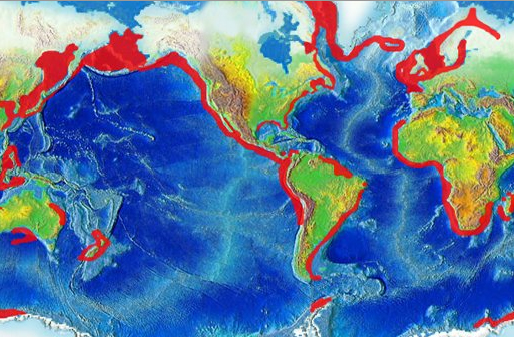Ocean Acidification
Ocean acidification is the term used to describe the decrease in saturation of carbonate ions in the ocean. Increased atmospheric carbon dioxide, from the human combustion of fossil fuels, dissolves in the ocean. Chemical reactions occur that decrease the pH of the ocean and concentration of carbonate ions. Carbon dioxide reacts with water and carbonate ions to form 2 bicarbonate ions, which are unusable by shellfish. Shell-forming organisms, like the bivalves we are concerned with, use the carbonate ions to form their calcium carbonate shells. The low concentration of carbonate ions disrupts the development of shellfish larvae and the process of shell formation in adults. Since the beginning of the industrial revolution, the overall ocean pH has decreased by 0.1. However, as pH is measured on a logarithmic scale, this equates to a 30% increase in acidity.

The ocean functions as a carbon sink. This enables ocean acidification.
In recent years, the shellfish industry has experienced major failures in production. Upwelling events on the west coast of the US naturally brings in water with a lower pH, but there is reason to suspect that this difference is augmented by anthropogenic CO2. The scale and complexity of ocean acidification in combination with the lack of global scientific support leaves the shellfish industry without definite answers.

Global map highlighting areas of upwelling, which are therefore more susceptible to ocean acidification.